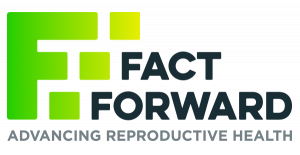Puberty is a time of physical, emotional, and social changes that can cause some young people great angst. Equipping students with the knowledge and skills about these changes can help them navigate through this challenging time and emerge strong, happy, and healthy. This workshop will provide you with a number of lessons to teach students about the changes of puberty, and will help you improve your skills on addressing this sensitive topic in an inclusive way. This workshop can be tailored to meet the specific needs of your group, school, or agency. All content is aligned with the National Sexuality Education Standards, the National Teacher Preparation Standards for Sexuality Education, and the Professional Learning Standards for Sex Education.
Training Hub
The Sex Education Collaborative Training Hub lists trainings for sex educators, facilitators, and other professionals on best practices for sharing important information with clients and the public. From teaching anatomy inclusively to effectively addressing bias in the classroom to addressing racial justice and equity in sex education, the Training Hub includes trainings, technical assistance, and policy support from state, regional, and national leaders in the field of sex education.
Please note: The Training Hub includes both in-person and online professional trainings. If you see a training you are interested in and it isn’t listed as virtual, please reach out directly to any of our members to find out what's possible!
Trainings Offered by State-Based and National Organizations
Displaying results 81 - 85 of 137Puberty 101: Teaching about the Birds and the Bees
- Indicator 2 (K-12): Demonstrate three student-centered instructional approaches that support a variety of learning styles. (S)
- Indicator 2 (K-12): List three physical, three social, and three emotional changes that occur during puberty.
- Indicator 3 (K-12): Identify three practices that students can adopt for maintaining healthy habits beginning during puberty.
It's Elementary: Family Life Lesson Plans for Grades K-3
This interactive workshop will allow participants to increase their comfort and knowledge about age-appropriate sexual development in young children and learn the skills they need to effectively implement lesson plans in their districts. The importance of partnering with parents and school administrators to build support for family life education for young children will be addressed. This workshop can be tailored to meet the specific needs of your group, school or agency. All content is aligned to the National Sexuality Education Standards, the National Teacher Preparation Standards for Sexuality Education, and the Professional Learning Standards for Sex Education.
- Indicator 3 (K-12): Explain the differences between positive vs. shaming approaches to teaching sex education.
- Indicator 6 (K-12): Describe three strategies for actively involving parents, caregivers, and other trusted adults in a sex education program.
- Indicator 1 (K-12): Explain three reasons why it is important to respond to every question students ask when teaching sex education.
- Indicator 2 (K-12): Demonstrate the ability to effectively respond to three different types of challenging questions. (S)
- Indicator 4 (K-12): Demonstrate the ability to respond effectively to students’ values-based comments and questions. (S)
Cultural Humility
As youth-serving professionals, we play a critical role in empowering young people by ensuring that they are equipped with the education, skills, support, agency, and resources needed to live healthy lives. To foster such empowerment, it is essential to create safe and inclusive environments for the diverse youth with whom we work. By engaging in the practice of cultural humility, which incorporates openness, self-awareness, and self-reflection in interactions with diverse individuals, youth-serving professionals can increase their self-awareness, examine personal biases, and enhance their communication skills, thereby strengthening their ability to provide culturally appropriate services for diverse and vulnerable youth.
Objectives of this training:
- Describe the tenets of cultural humility at the intrapersonal, interpersonal, and organizational levels.
- Apply communication strategies to reduce assumptions and stereotyping at the interpersonal level.
- Identify language and behaviors that contribute to or detract from actualizing the principles of cultural humility.
- Indicator 2 (K-12): Describe three impacts that conscious and unconscious bias could have on cross-cultural interactions when teaching sex education.
- Indicator 4 (K-12): Describe three strategies to reduce the impact of conscious and unconscious bias and enhance cross-cultural interactions in the classroom when teaching sex education.
- Indicator 2 (K-12): Demonstrate three strategies for creating culturally responsive classrooms. (S)
Virtual PD - Adapting Lessons for Students Who Are LGBQA+
Virtual Professional Development is a simulated classroom where teachers can practice teaching student avatars using short scenarios and support from an instructional coach, so they can quickly learn and master the skills they most need to be effective. With upper elementary, middle and high school classrooms, Virtual PD has scenarios for teachers of all grade levels across a wide range of topics aligned with the Professional Learning Standards for Sex Education (PLSSE). You can watch the video here (link is external) to learn more about Virtual PD.
Using the Virtual Professional Development simulated classroom, the educator will practice Adapating Lessons for Students Who Are LGBQA+with the student avatars. In this VPD scenario, the educator will review a relationship scenario and will rewrite it to make the language more inclusive and affirming of LGBQA+ students. Once in the simulation with five students, the participant will have students discuss whether or not they think the scenario is an example of a healthy or unhealthy relationship. The participant will need to demonstrate three strategies that can be used to make lessons affirming for youth of all sexual orientations.
- Indicator 4 (K-12): Demonstrate the use of inclusive and affirming language. (S)
- Indicator 9 (K-12): Demonstrate three strategies that can be used to include positive portrayals of LGBQ+ people in lessons. (S)
Reproductive Health 101
In this training, participants will gain a general understanding of reproductive health as it relates to teen pregnancy prevention. Topics include reproductive anatomy and physiology, adolescent growth and development, HIV/STIs, and contraceptives.
This training is designed for:
- Educators new to teaching sex education
- Anyone who wants a refresher on the basics
- Health care professionals
- Indicator 1 (6-12): Explain fertilization, implantation, conception, and how pregnancy occurs.
- Indicator 2 (6-12): Demonstrate the steps necessary for effective external and internal condom use and how to access condoms. (S)
- Indicator 4 (6-12): Explain methods of contraception, including the latest medical advances that are popular among young people.
- Indicator 6 (6-12): Identify three federal and/or state laws that impact young peoples’ access to effective reproductive and sexual health care (e.g. age of consent for services, confidential access to health care services, and access to condoms)
- Indicator 1 (6-12): Describe HIV and three common STDs/STIs, and how each can and cannot be transmitted.
- Indicator 2 (6-12): Explain that many STD/STIs do not cause symptoms and the only way to know if you have one is to be tested.
- Indicator 3 (6-12): Explain the benefits of getting tested and treated for HIV and other STDs/STIs.
- Indicator 4 (6-12): Explain three facilitators and three barriers to STD/STI testing and treatment.
- Indicator 5 (6-12): Demonstrate the steps necessary for effective external and internal condom use and how to access condoms. (S).
- Indicator 6 (6-12): Describe the latest medical advances in HIV and other STDs/STIs prevention and treatment.
- Indicator 7 (6-12): Identify three medically accurate and youth-friendly resources for STD/STI and HIV prevention, testing, and treatment
- Indicator 1 (K-12): Describe how puberty prepares the human body for the potential to reproduce.
- Indicator 2 (K-12): List three physical, three social, and three emotional changes that occur during puberty.
- Indicator 3 (K-12): Identify three practices that students can adopt for maintaining healthy habits beginning during puberty.
- Indicator 1 (K-12): Explain three reasons why it is important to respond to every question students ask when teaching sex education.
- Indicator 2 (K-12): Demonstrate the ability to effectively respond to three different types of challenging questions. (S)
- Indicator 1 (K-5): Explain the benefits of teaching young children the medically accurate terms for genitals.
- Indicator 2 (K-12): Demonstrate the ability to use medically accurate terms for sexual and reproductive anatomy, including all external genitals. (S)
- Indicator 3 (K-12): Explain the function of the individual sexual and reproductive body parts and how they typically work.
Additional Trainings offered by out-of-state organizations
- ‹ previous
- 48 of 49
- next ›
What’s Triggering Our Teens? Intimate Partner Violence Edition
Participants will gain knowledge of how intimate partner violence impacts the mental, sexual and reproductive health of young people who witness and/or experience it. Participants will brainstorm strategies to intervene and learn about local, state, and national resources.
This training is designed for:
- Educators
- Teachers
- Substitute Teachers
- Counselors
- Coaches
- Parents
- Clergy
- Community Workers
- Healthcare Providers
- Healthcare Staff
- Clinicians
- Indicator 1 (K-12): Describe three distinguishing characteristics between healthy and unhealthy relationships, involving family, friends, and/or romantic partners.
- Indicator 2 (K-12): Explain three ways that healthy relationships can positively impact personal well-being.
- Indicator 5 (K-12): Describe three ways to help students set and respect personal boundaries in relationships.




